Hydrophane Opal
Hydrophane opal is a fascinating variety of opal known for its unique ability to absorb water, which can dramatically alter its appearance. Unlike most gemstones, hydrophane opal has a porous structure that allows it to soak up water like a sponge, temporarily enhancing its transparency and color vibrancy. This characteristic makes it a captivating gemstone prized by collectors and jewelry enthusiasts alike.


The term “hydrophane” itself derives from the Greek words “hydro,” meaning water, and “phanein,” meaning to show or appear. Therefore, hydrophane opal literally translates to “water-loving opal,” reflecting its affinity for moisture.
In its natural state, hydrophane opal may appear opaque or exhibit muted colors. However, when submerged in water or exposed to moisture, it undergoes a remarkable transformation. The absorbed water fills the microscopic pores within the stone, increasing its transparency and intensifying its play-of-color, the mesmerizing phenomenon for which opal is renowned. This temporary enhancement lasts until the gemstone dries out, at which point it returns to its original appearance.
The history of hydrophane opal dates back centuries, with origins in regions known for opal mining, such as Australia, Ethiopia, and Mexico. These locales have yielded some of the most renowned hydrophane opals, each with its own distinct characteristics and allure. Throughout history, opals, including hydrophane varieties, have captivated cultures worldwide, often revered for their mystical properties and symbolic significance.
While hydrophane opal shares many characteristics with other opal varieties, its ability to absorb and release water distinguishes it as a unique and captivating gemstone in the world of jewelry and gemology. Its enigmatic nature continues to fascinate gem enthusiasts and collectors, ensuring its enduring appeal in the realm of precious gemstones.
Contents
- Geological Formation
- Locations and Mining Sites
- Physical Properties and Chemical Composition
- Importance and Uses
Geological Formation

The geological formation of hydrophane opal is a fascinating process that involves the interplay of various geological forces over millions of years. Opals, including hydrophane varieties, are formed through the interaction of silica-rich water and sedimentary rock. Here’s a simplified overview of the formation process:
- Silica Deposition: Opals are primarily composed of hydrated silica (SiO2·nH2O), which is deposited from silica-rich solutions. These solutions often originate from the weathering and decomposition of pre-existing rocks containing silica, such as granite, and are carried by groundwater.
- Precipitation in Voids: As the silica-rich solutions percolate through the Earth’s crust, they fill voids and cavities within sedimentary rocks, such as sandstone or shale. These voids can result from a variety of geological processes, including erosion, faulting, or the decay of organic matter.
- Chemical Reactions: Within these voids, chemical reactions occur between the silica-rich solutions and other minerals present in the surrounding rock. These reactions can influence the color, transparency, and play-of-color of the resulting opal.
- Time and Pressure: Over millions of years, the deposited silica undergoes a process of consolidation and dehydration, gradually forming solid opal. During this time, the opal may undergo structural changes and develop its characteristic play-of-color, caused by the diffraction of light through microscopic spheres or voids within the gemstone.
- Hydrophane Transformation: In the case of hydrophane opal, its unique porous structure allows it to absorb water when submerged. This ability is thought to be due to the presence of interconnected voids and capillaries within the opal, which can temporarily alter its appearance by increasing transparency and intensifying its play-of-color.
- Mining and Extraction: Once formed, opal deposits may be discovered through exploration and mining activities. Miners extract opal-bearing rock from underground or open-pit mines, and then process the material to recover the opal. Hydrophane opals, like other varieties, are carefully cut and polished to reveal their beauty before being used in jewelry or collected as specimens.
The geological formation of hydrophane opal is a complex and dynamic process that highlights the intricate relationship between geological forces, mineralogy, and the natural environment.
Locations and Mining Sites

Hydrophane opals can be found in various locations around the world, each with its own geological characteristics and mining sites. Some of the notable regions known for hydrophane opal mining include:
- Australia: Australia is renowned for its opal deposits, including hydrophane varieties. The state of South Australia, particularly the areas around Coober Pedy, Andamooka, and Mintabie, is famous for producing high-quality opals, including hydrophane opals. Lightning Ridge in New South Wales is another significant opal mining area known for its precious opals.
- Ethiopia: Ethiopia has emerged as a significant source of hydrophane opals in recent years. The Wollo Province, particularly the Welo and Mezezo regions, is known for producing stunning hydrophane opals with vibrant play-of-color. The opal fields in Ethiopia have gained attention for their unique characteristics and the discovery of novel opal varieties.
- Mexico: Mexico has a long history of opal mining, with notable deposits found in various regions, including Querétaro, Jalisco, and Guerrero. Mexican opals, including hydrophane varieties, often exhibit a distinctive play-of-color and are highly valued in the gem trade.
- United States: Opal deposits can be found in several states across the U.S., including Nevada, Idaho, Oregon, and California. Nevada, in particular, is known for its precious black opals, which are found in areas such as Virgin Valley. Hydrophane opals may also be sourced from some of these locations.
- Other Countries: Hydrophane opals are also found in other countries, albeit to a lesser extent. Countries such as Brazil, Honduras, and Slovakia have reported occurrences of hydrophane opals, contributing to the global supply of these unique gemstones.
Mining sites in these regions vary from small-scale artisanal operations to large-scale commercial mines. Opal mining often involves digging open pits or underground tunnels to access the opal-bearing rock layers. Miners use a combination of hand tools, machinery, and sometimes explosives to extract the opal-bearing material, which is then processed to recover the opals. The mining process can be challenging and labor-intensive due to the geological conditions and the delicate nature of opal deposits.
Physical Properties and Chemical Composition

The physical properties and chemical composition of hydrophane opal contribute to its unique characteristics and appearance. Here’s an overview:
- Chemical Composition: Hydrophane opal is primarily composed of hydrated silica (SiO2·nH2O), similar to other varieties of opal. The presence of water molecules within its structure distinguishes it from other forms of silica, such as quartz.
- Hardness: On the Mohs scale of mineral hardness, hydrophane opal typically ranges from about 5.5 to 6.5. While opal is relatively soft compared to other gemstones, it still has sufficient durability for use in jewelry, although care should be taken to avoid impacts and scratches.
- Specific Gravity: The specific gravity of hydrophane opal generally ranges from 1.98 to 2.20, depending on factors such as porosity and impurities. This relatively low specific gravity is characteristic of opals and can help distinguish them from other gemstones.
- Transparency and Color: Hydrophane opal can exhibit a wide range of colors, including white, gray, blue, green, yellow, orange, and red. Its transparency can vary from opaque to translucent, with some specimens becoming transparent when submerged in water. The play-of-color, the iridescent display caused by the diffraction of light, is one of the most prized characteristics of hydrophane opal.
- Structure: Hydrophane opal has a non-crystalline, amorphous structure, unlike crystalline minerals such as quartz. Its structure is composed of microscopic spheres or voids that diffract light, resulting in the play-of-color effect. The porous nature of hydrophane opal allows it to absorb water, which can temporarily alter its appearance by increasing transparency.
- Fracture: Opal, including hydrophane varieties, typically exhibits conchoidal fracture, meaning it breaks with smooth, curved surfaces resembling the inside of a seashell. This fracture pattern is characteristic of amorphous minerals like opal.
Understanding the physical properties and chemical composition of hydrophane opal is essential for gemologists, jewelers, and collectors alike. These properties not only determine the gemstone’s appearance and durability but also play a crucial role in its identification and valuation within the gem trade.
Importance and Uses

The importance and uses of hydrophane opal stem from its unique characteristics and aesthetic appeal, making it a valued gemstone in various applications:
- Jewelry: Hydrophane opal is prized for its vibrant play-of-color, which can range from subtle flashes to intense hues. As a result, it is frequently used in jewelry, including rings, earrings, pendants, and bracelets. Its mesmerizing colors and ethereal appearance make it a popular choice for both traditional and contemporary jewelry designs.
- Collecting: Hydrophane opals, particularly those with exceptional play-of-color or unique characteristics, are highly sought after by gemstone collectors. Collectors value hydrophane opals for their rarity, beauty, and the intriguing phenomenon of their color play, which varies depending on factors such as light conditions and viewing angles.
- Investment: High-quality hydrophane opals, especially those from renowned mining locations and exhibiting exceptional color play, can appreciate in value over time. Some investors purchase hydrophane opals as part of their investment portfolios, capitalizing on the gemstone’s rarity and potential for future price appreciation.
- Metaphysical and Spiritual Uses: Opals, including hydrophane varieties, have been associated with various metaphysical properties and beliefs. In some cultures, opals are believed to promote emotional balance, enhance creativity, and bring good fortune to the wearer. As such, hydrophane opals may be used in spiritual practices, meditation, or as talismans or amulets.
- Lapidary Arts: Hydrophane opal’s unique characteristics, including its play-of-color and ability to absorb water, make it a captivating material for lapidary artists. Skilled artisans may carve, sculpt, or shape hydrophane opals into decorative objects, sculptures, or ornamental pieces, showcasing the gemstone’s natural beauty in creative and innovative ways.
- Scientific Research: Hydrophane opal, like other opal varieties, is of interest to scientists and researchers studying topics such as mineralogy, geology, and materials science. Its porous structure, optical properties, and interaction with water make it a subject of study for understanding phenomena such as light diffraction, mineral formation processes, and geological environments.
Overall, the importance and uses of hydrophane opal extend beyond its intrinsic beauty, encompassing cultural, artistic, scientific, and economic aspects. Whether admired for its aesthetic appeal, valued as a collectible, or studied for its geological significance, hydrophane opal continues to captivate and inspire individuals worldwide.
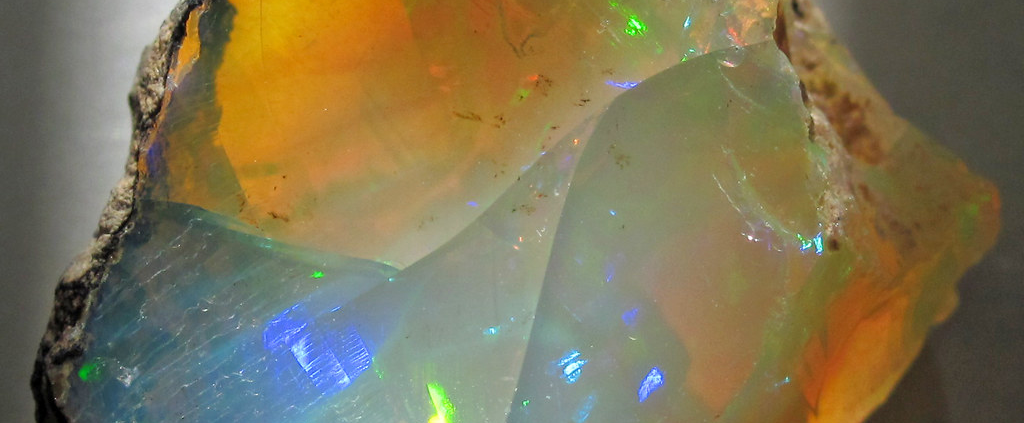
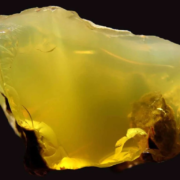
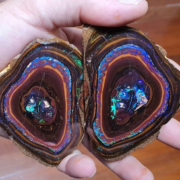
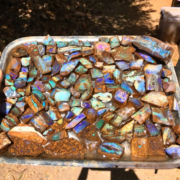
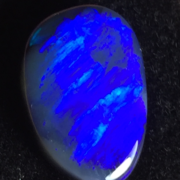
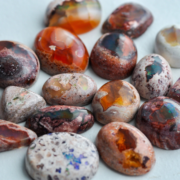
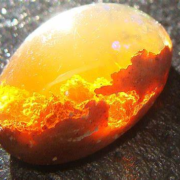


Leave a Reply
Want to join the discussion?Feel free to contribute!